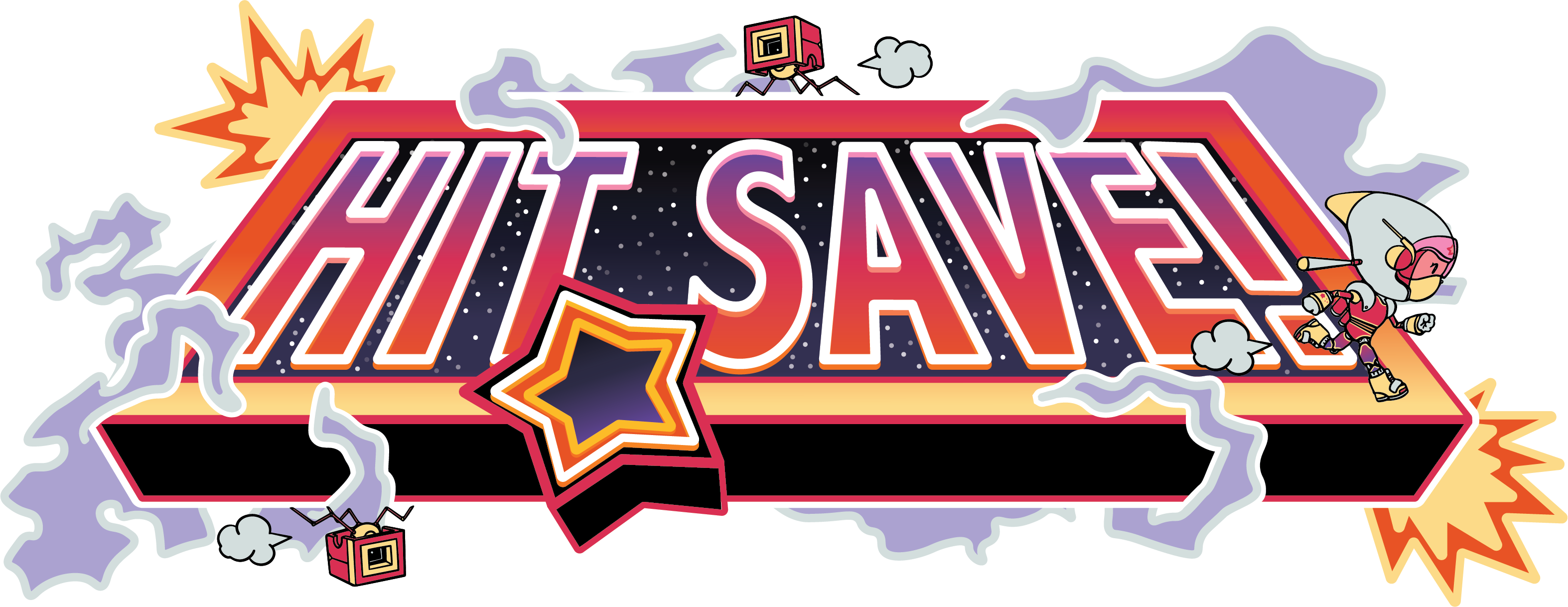The year is 2010. It's been three years since the iPhone took the mobile phone marketplace by storm. Japan's fervent feature phone culture is starting to show its age in the face of emerging smartphone technology. In the midst of this technological juncture, Fujitsu released one of the strangest mobile phones ever conceived, the F-04B. It came with a few preloaded video games, but one stood out in particular: Wild Land (ワイルドランド), a game developed specifically for this phone model. Since the F-04B was exclusive to Japan, it quickly fell into obscurity, leaving Wild Land to languish in the depths of lost gaming media... until now!
In this post, I'll be taking a deep dive into Wild Land, the hardware it ran on, and its historical significance. In doing so, I hope to document this lost game's existence and promote the preservation of its fellow lost Japanese feature phone games.
What is the F-04B?
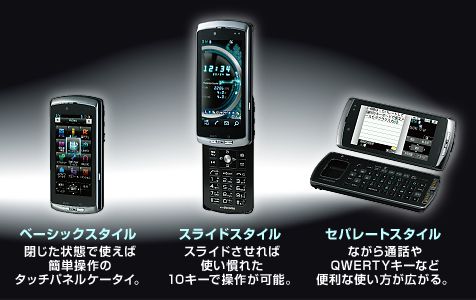
The F-04B feature phone was released in March 2010 by electronics manufacturer Fujitsu. Part of telecom provider DoCoMo's midrange PRIME series, the phone sports a 3.4-inch touchscreen and a 12.2 megapixel camera. However, the F-04B's primary selling point was its ability to split into two halves: a display half and a keypad half. The display half houses the phone's touchscreen and internals. The keypad unit contains a QWERTY keyboard and a slide-out traditional keypad. Both halves contain a gyroscope and communicate via Bluetooth.
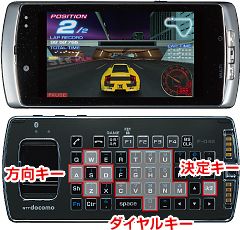



Fujitsu believed this two-half functionality opened up a wide range of utilities. For example, the keypad half could be used as a gamepad, remote control, or speakerphone. There was even a projector add-on for the display half! Nevertheless, the F-04B's experimentation is indicative of feature phones' waning influence as smartphones started dominating the marketplace.
An Overview of Wild Land
Fujitsu's response to the smartphone may have been inherently flawed, but it did allow for the creation of one unique video game, Wild Land. Unfortunately, I couldn't figure out the developers of the game due to an absence of credits in the phone's manual and the game itself.

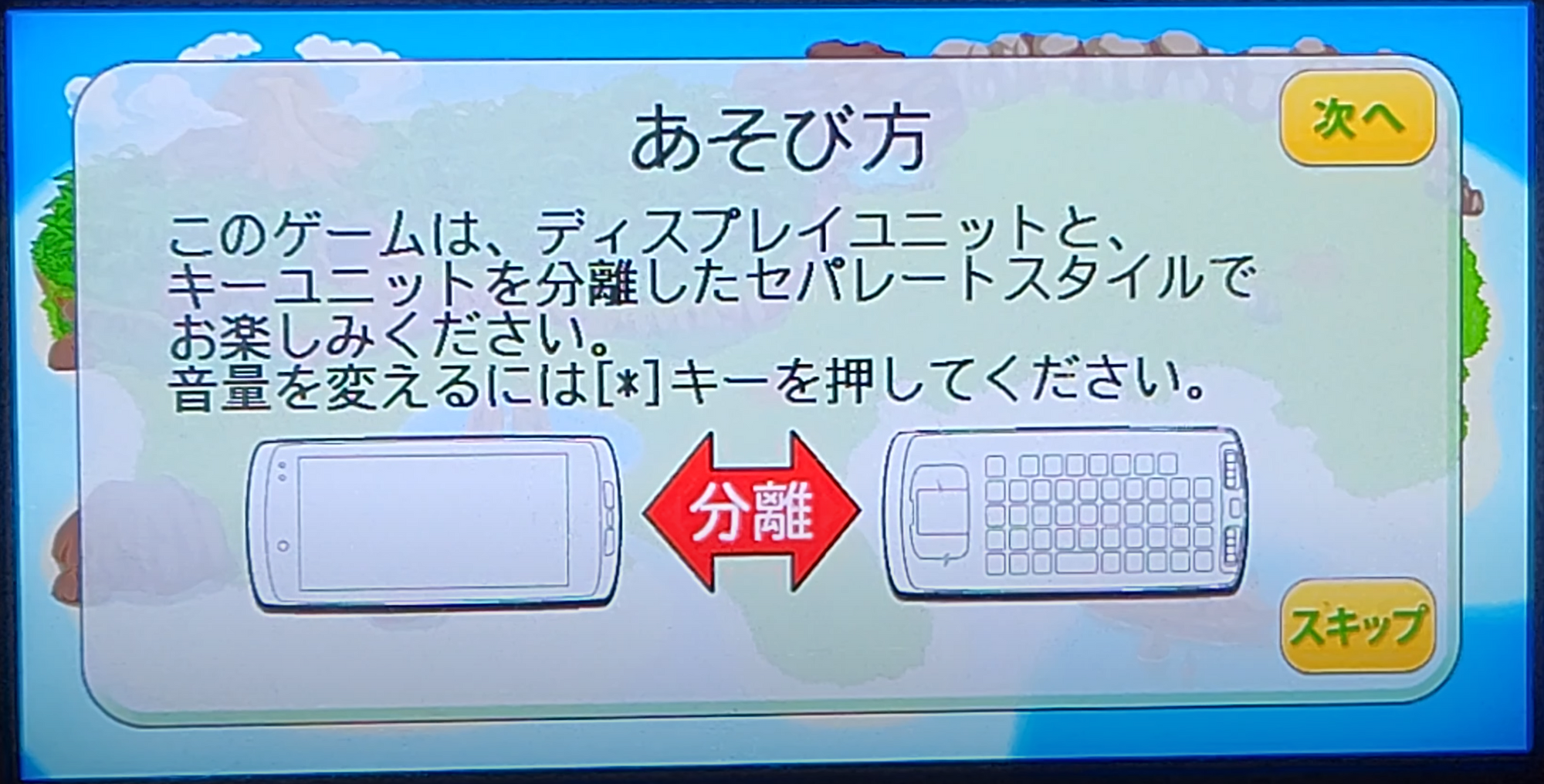
The game's story is pretty simple. Our unnamed player character is hit by a large marlin while sailing on his boat. He becomes shipwrecked on a deserted island and must survive for 30 days using the resources on the island. Wild Land is designed to be played with both phone halves detached, with the keypad unit's QWERTY keyboard serving as a game controller. The man can also be moved to a specific location on the island by touching the display.
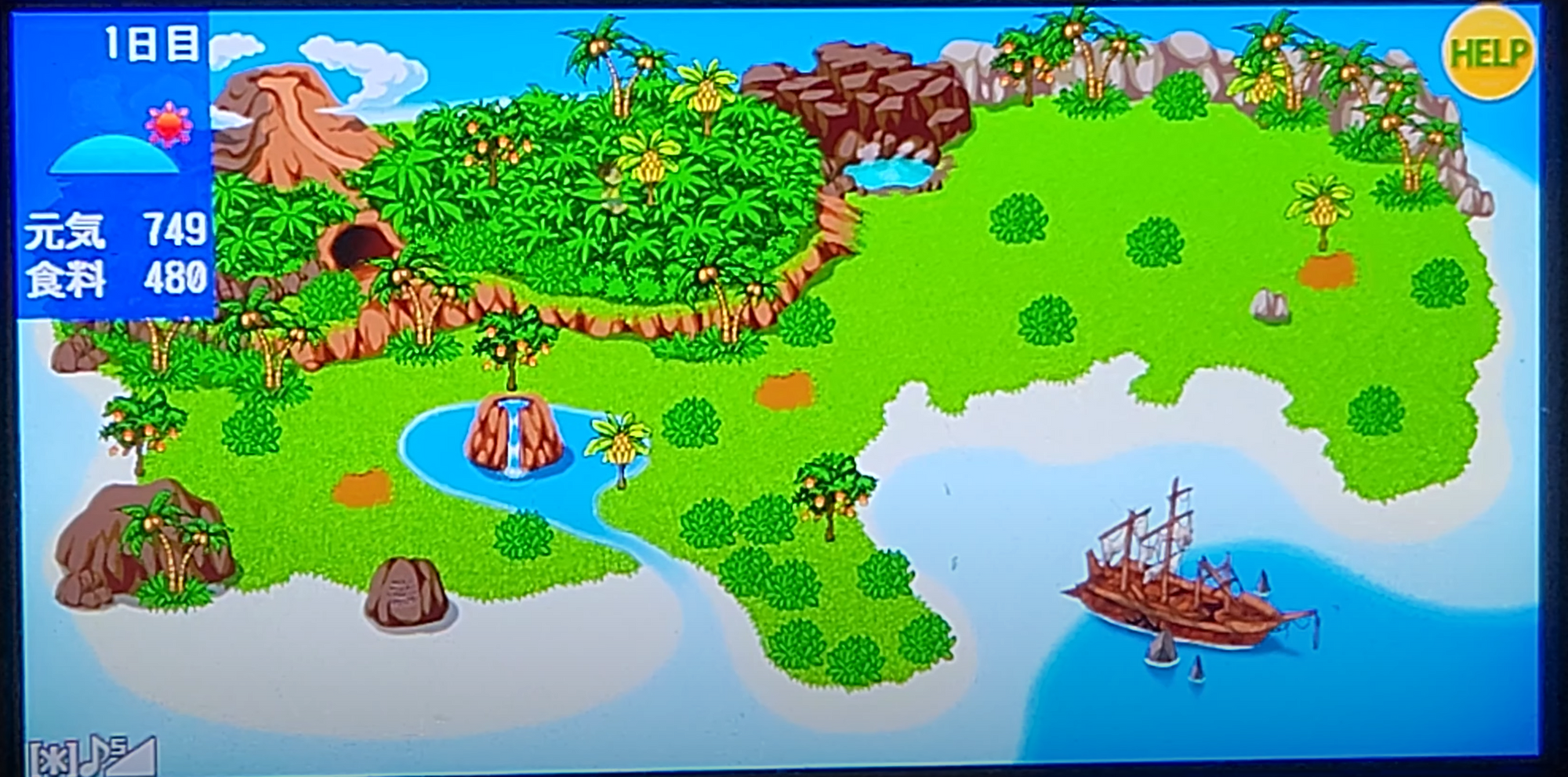
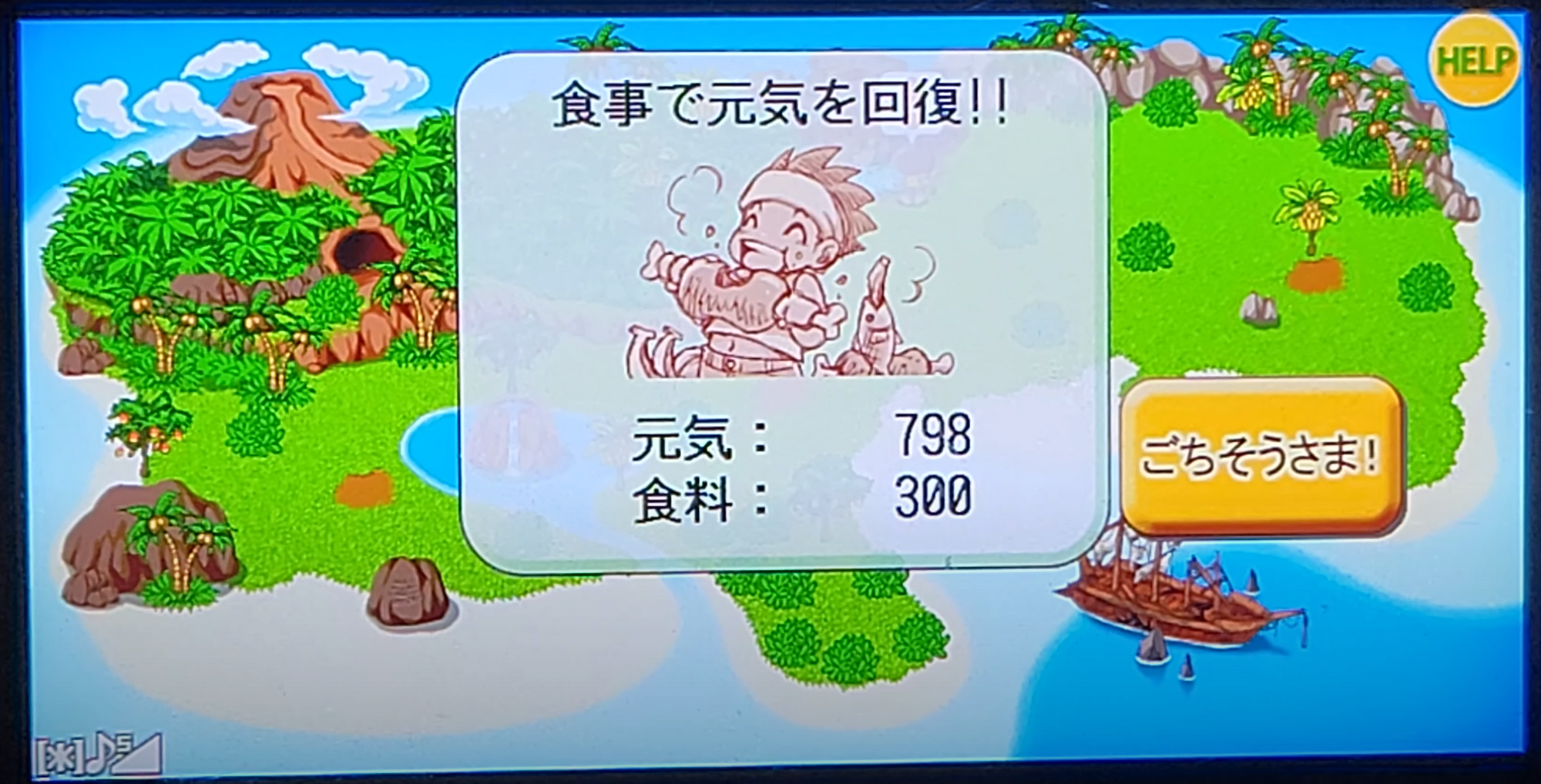
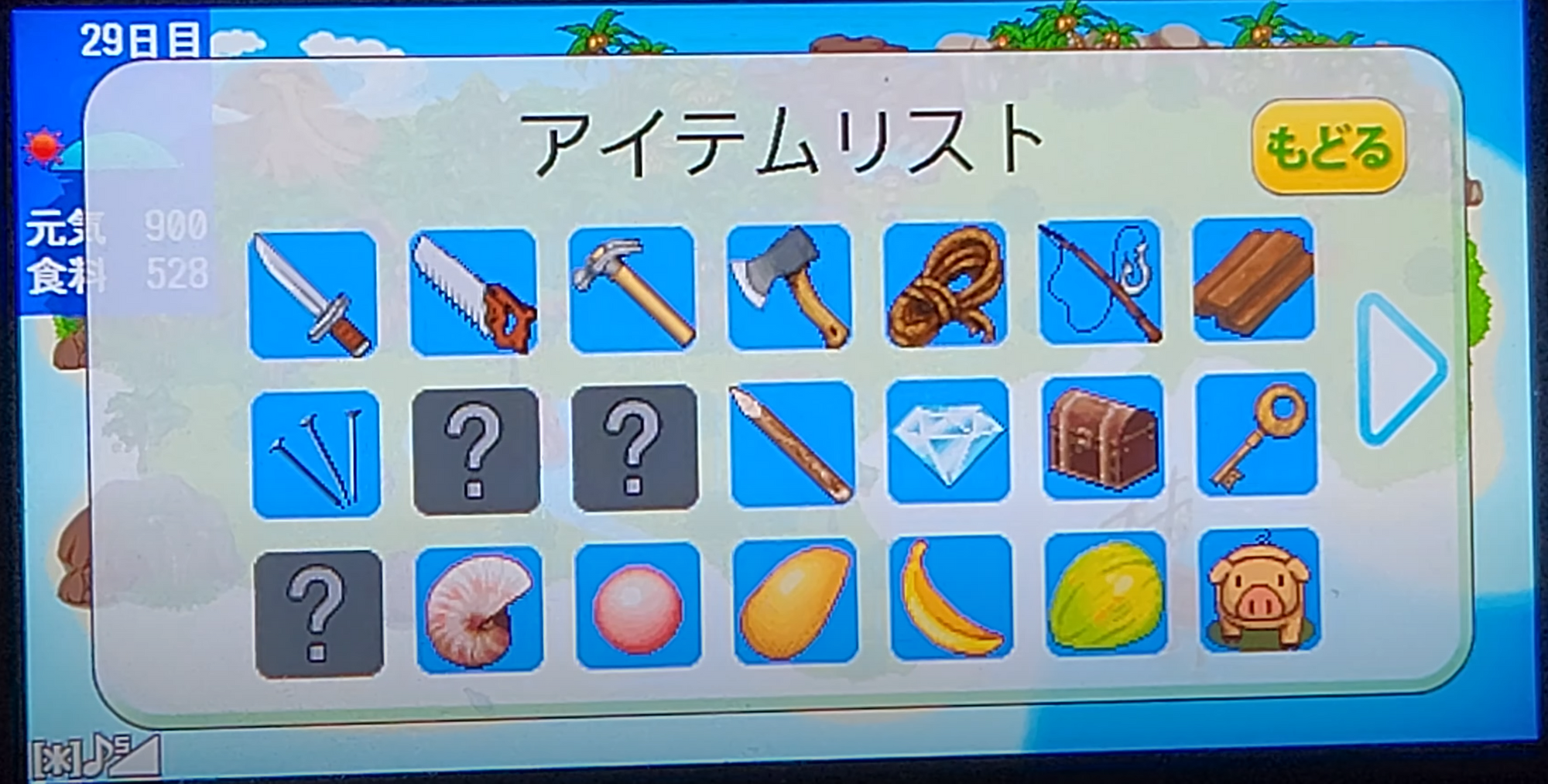
Wild Land has a status menu at the top left of the screen to show the player's progression through each day. The sun's position shows how much time is left in the day. The top numerical value is energy, and the value below it is the amount of stored food. The maximum amount of stored food the player can have is initially limited to 5000, but it can be expanded to 9999 if the player is able to build a hut. When the player moves, time moves and the amount of energy they have decreases. As the days progress, the player's energy decreases at a faster rate per step, forcing them to plan their routes around the island. Opening the pause menu with the F4 key allows the player to look at their items, save the game, and consume food.
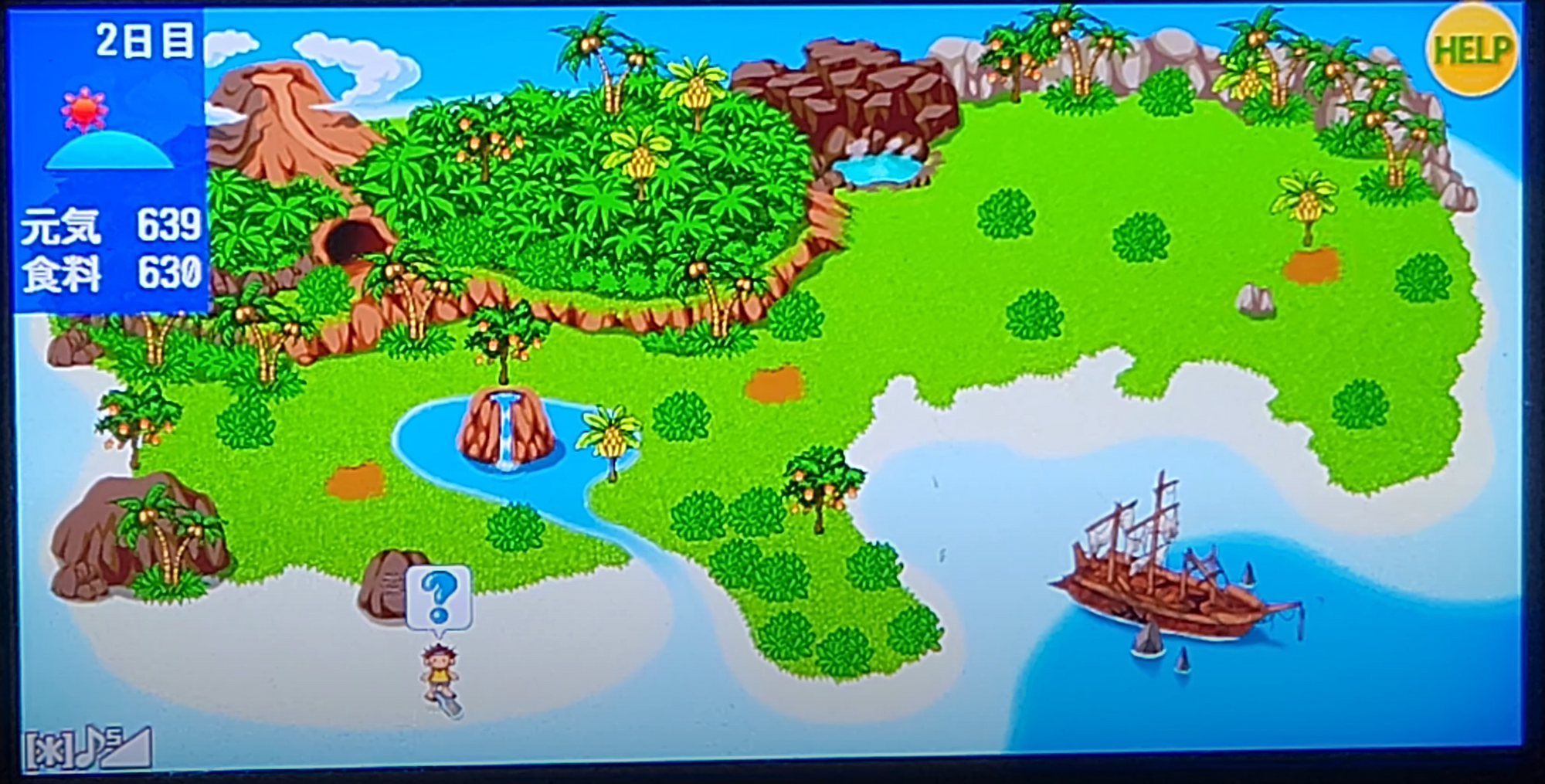
To complete the game, the player needs to collect tools and food. However, the tools cannot be found all at once. At the beginning of every day, a note in a bottle washes up at the southwest corner of the island. Most of the time, the bottle contains insignificant musings about the island, but on certain days, the bottle tells the player the location of a certain tool. Reading the message triggers the tool, so it is impossible to obtain a tool without reading the message beforehand.
The tools in question are an axe, a saw, a hammer, rope, a knife, and boards/nails. The axe is dedicated to chopping down trees, while the rest are for building a raft or chiseling a spear. In order to obtain food and use these tools, the player must participate in... motion control minigames!
Wild Land's Motion Control Minigames
Yes, you read that right! Using the keypad half as a motion controller, Wild Land has six motion control minigames. Each of them are crucial to the player's survival throughout the 30 days. It's important to note that each of these minigames consumes energy, with some draining it more than others.
To obtain coconuts (the fruit that nets the most energy), the player must climb a palm tree and shake the fruit down. To climb the tree, the player shakes the keypad half vertically. Once they reach the top, rolling the keypad unit releases the coconuts.
After obtaining the fishing rod on the third day via a low tide, the player can play a fishing minigame to collect fish. This minigame takes advantage of the phone's touchscreen. First, the player taps the location where they want to cast their fishing rod. Then, they flick the phone's keypad forward to simulate casting a rod. Once a fish bites the bait, the player catches it by flicking the keypad upwards with good timing. There are several types of fish, ranging from barracudas to black kingfish! The larger the species of fish, the more food the player is rewarded. Interestingly, time progresses half as fast during the fishing minigame, presumably due to the amount of time it takes to lure a fish. For this reason, I found the fishing minigame to be the best way to gather food in the second half of the game, as walking to the bottle and coconut trees expended too much energy.
On the fourth day, the note in the bottle reveals that an axe is inside the island's cave. The axe is used to cut down trees in order to make a hut. A hut increases the player's maximum food supply from 5000 to 9999. The game gives the player a location to make a hut on each side of the island. Chopping down a tree involves the player shaking the keypad unit sideways as if they were using an axe. To cut another tree, the player must shake the display. It takes 10 trees to build a hut. This minigame consumes 14 units of health every second, with the frequency increasing after day 15. This makes building a hut undesirable, especially when the game's original food limit is more than enough to survive the 30 days.
After obtaining a knife on the 20th day, the player can walk to the back of the island's forest and chisel a spear for hunting animals in bushes. Similar to the axe minigame, the player must swing the keypad unit sideways to chisel the wood into a spear and shake the display to move onto another piece of wood. However, this minigame does not consume as much energy as the axe minigame, with it only expending five units of energy every second. The game allows you to hold up to 10 spears.
After the player crafts a spear, they are able to inspect rustling bushes to hunt animals. The player is presented with a top-down view of a group of moving animals. To aim left or right, the player tilts the phone screen in the corresponding direction. Next, the player swings the keypad half forward to throw their spear forward. The number of throws corresponds to the number of spears the player has in their inventory. Like the fishing minigame, there are several types of animals like chicken and pigs.
There is one final motion control minigame, which tasks the player with escaping on a raft. The player swings the keypad vertically to row the raft while tilting the display half to avoid oncoming obstacles in the water. As of the writing of this article, I have been unable to play this particular minigame because I cannot find a way to trigger it. The game's help menu does not explain how to build a raft nor how this minigame can be triggered otherwise. I assume this minigame is an alternate way to beat the game without waiting 30 days.
If you would like to see more footage of Wild Land, I've uploaded a 2.5 hour long-play for your viewing pleasure!
How Can We Save This Game?
Wild Land and other Japanese feature phone games like it are all currently facing a preservation crisis. All feature phone game storefronts have been shut down, leaving downloaded games stranded on aging hardware and thousands more delisted. This is a loss of gaming history on a massive scale, further complicated by the difficulties in hacking Japanese feature phones. Due to their geographical exclusivity, it is difficult to find datasheets or documentation on phones' chips; many devices even use custom chips! Therefore, hardware hacking is on a model-by-model basis. Some phone models support moving games to a microSD card, but such SD dumps are encrypted. There are also other hacking vectors like NetFront browser and PDF reader exploits.
However, against all odds, the small yet dedicated Japanese feature phone preservation community has been working tirelessly to save these games from obscurity. They've made great progress, such as finding a way to dump firmwares (and by extension preloaded games) from multiple LG DoCoMo phones. In order to preserve Wild Land, more research has to be done on the F-04B's inner workings. As stated earlier, hardware hacking is on a model-by-model basis, so the small community has a lot on their hands. They are always looking for more technical assistance, so don't hesitate to reach out to them if you think you can help! The KeitaiWiki Discord server is the best place to do so due to its wealth of talented and knowledgeable people. Furthermore, simply talking and spreading the word about Japanese feature phone games greatly benefits the community. The more people know about these obscure games, we will be able to find more technically-minded people! For more details on this niche sect of game preservation, I recommend reading my Hit Save article on the subject.
Wild Land may be indicative of the fall of Japanese feature phone gaming, but it is also indicative of what made them so special. Whether it be unorthodox experiences like Wild Land or expansive adventures like Before Crisis: Final Fantasy VII, Japanese feature phone games accomplished one thing: bringing a gaming experience to the palm of your hand.
